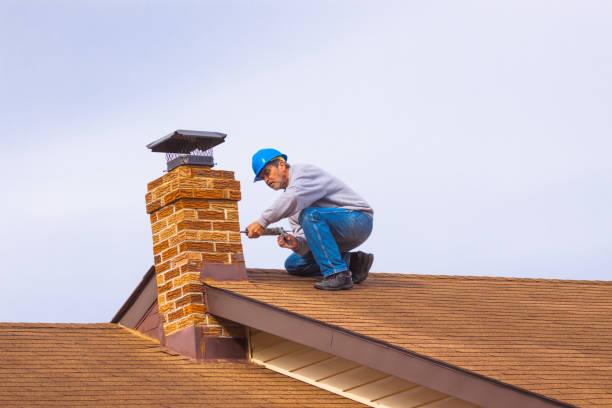In the realm of architectural heritage and modern construction, chimneys stand as silent sentinels, embodying both function and aesthetic appeal. From their humble beginnings as hearth extensions to their present-day roles in ventilation and safety, chimneys have evolved alongside human civilization. Understanding the intricacies of chimney constuction and restoration requires delving into the fusion of science, craftsmanship, and historical preservation.
Introduction
Chimneys have played a pivotal role in human habitation for centuries, serving as conduits for smoke, gases, and ventilation. In addition to their functional significance, chimneys often serve as architectural focal points, adding character and charm to buildings of various styles and eras. The process of chimney construction and restoration involves a delicate balance of modern engineering principles and traditional craftsmanship, ensuring structural integrity while preserving historical authenticity.
The Science Behind Chimney Construction
Chimney construction is a multifaceted endeavor that requires a deep understanding of structural engineering, materials science, and thermal dynamics. Modern chimneys are typically constructed using materials such as brick, stone, concrete, or metal, each offering unique advantages in terms of durability, insulation, and aesthetics. The design and dimensions of a chimney are carefully calculated to optimize draft efficiency and minimize the risk of creosote buildup and chimney fires.
Key factors influencing chimney construction include:
- Foundation and Support: A solid foundation is essential to support the weight of the chimney stack and withstand external forces such as wind and seismic activity. Proper reinforcement and anchoring ensure stability and longevity.
- Flue Design: The flue, or inner lining of the chimney, serves as a pathway for smoke and gases to exit the building. Flue design considerations include diameter, length, insulation, and the incorporation of dampers and clean-out openings.
- Insulation and Thermal Performance: Effective insulation helps prevent heat loss and condensation within the chimney structure. Insulating materials such as ceramic liners or refractory concrete improve thermal efficiency and reduce the risk of chimney deterioration.
- Ventilation and Draft Control: Chimney design must account for factors such as chimney height, cross-sectional area, and surrounding obstructions to ensure proper draft and ventilation. Draft-inducing mechanisms such as chimney caps, baffles, and exhaust fans may be employed to optimize airflow.

Chimney restoration
The Craft of Chimney Restoration
While many historic chimneys have weathered the passage of time with grace, others require careful restoration to preserve their structural integrity and historical significance. Chimney restoration encompasses a range of techniques aimed at repairing damage, reinforcing weak areas, and enhancing the visual appeal of aging chimneys.
Assessing Structural Integrity
Before embarking on a restoration project, thorough inspection and assessment are essential to identify underlying issues and develop an appropriate course of action. Common structural problems encountered in aging chimneys include:
- Cracking and Spalling: Exposure to moisture, temperature fluctuations, and corrosive gases can cause bricks and mortar joints to deteriorate over time, leading to cracks, gaps, and surface erosion.
- Settlement and Leaning: Foundation settlement, soil movement, and seismic activity may result in chimney settlement or leaning, compromising stability and safety.
- Flue Liner Damage: Cracked or deteriorated flue liners can pose fire hazards and allow toxic gases to infiltrate living spaces, necessitating prompt repair or replacement.
Restoration Techniques and Materials
Chimney restoration involves a meticulous blend of traditional craftsmanship and modern restoration techniques, guided by principles of structural integrity, historical accuracy, and aesthetic sensitivity. Depending on the nature and extent of damage, restoration methods may include:
- Tuckpointing: The process of removing deteriorated mortar joints and replacing them with fresh mortar to improve structural stability and water resistance.
- Brick Replacement and Repair: Damaged or deteriorated bricks are carefully removed and replaced with matching or salvaged bricks to maintain the chimney’s original appearance and integrity.
- Flue Relining: Installing a new flue liner within the existing chimney structure to enhance safety, improve draft efficiency, and comply with modern building codes and standards.
- Reinforcement and Stabilization: Structural reinforcements such as steel braces, helical piers, or carbon fiber wraps may be utilized to strengthen compromised chimney stacks and prevent further deterioration.
Conclusion
Chimneys stand as enduring symbols of human ingenuity, resilience, and craftsmanship, bridging the gap between past traditions and contemporary living. Whether constructing a new chimney or restoring a venerable landmark, the science and craft of chimney construction and restoration demand unwavering attention to detail, technical expertise, and a deep appreciation for architectural heritage. By embracing the principles of sustainability, safety, and historical preservation, we ensure that chimneys continue to grace our skylines and enrich our built environment for generations to come.


